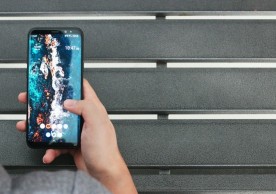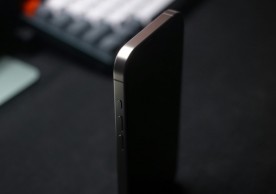Android Was Destined For Digital Cameras Before Becoming a Smartphone Operating System
Vamien McKalin
The departed former boss of Google's Android division, Andy Rubin, revealed some interesting facts about Android. The operating system was first designed to power digital cameras; however, with the fall in camera sales, Andy Rubin and his team thought it would be wise to take a different route.
Six years later, and Android has become the largest smartphone operating system in the world, so it seems Android co-founder Rubin and his team made a smart move.
"The exact same platform, the exact same operating system we built for cameras, that became Android for cellphones," said Rubin, who spoke at an economic summit in Tokyo, according to PC World.
The plan for Android back then was pretty decent, and could have still made a dent in the tech industry if digital cameras were on the up and coming. Rubin said the initial plan was to create a camera platform that could connect to the cloud for storing photos.
Andy showed a slide he used all those years ago, when he was trying to pitch the idea to investors. It includes a camera connected wirelessly and by wire, which was then linked to what is called an "Android Datacenter."
After that, Rubin decided it would be best if Android was used in handsets, and so the team declared Android an "open source handset solution."
"We decided digital cameras wasn't actually a big enough market," said Rubin. "I was worried about Microsoft and I was worried about Symbian, I wasn't worried about iPhone yet."
Rubin realized there was an opportunity for Android to strike fast and hard due to the amount of money phone makers had to pay to use competing operating systems. He believed that by making Android free, the operating system could potentially shake up the market, and that it did.
Rubin is no longer the poster boy for Android, as he has stepped down to do some new, undisclosed work at Google.
most read
related stories
more stories from Mobile
-
Google-Backed Glance Launches Pilot of Android Lockscreen Platform in US
Check out the latest from Glance! They're piloting their Android Lockscreen Platform in the US. Don't miss it!
ernest hamilton -
X Plans Smart TV App, Promising Immersive Entertainment Experience
Exciting news! X plans to launch a Smart TV app for an immersive entertainment experience. Stay tuned!
ernest hamilton -
T-Mobile Introduces New 5G Internet Plans for Enhanced Home and Travel Connectivity
T-Mobile unveils new 5G internet plans, promising enhanced home and travel connectivity for customers seeking high-speed internet on the go.
ernest hamilton -
Huawei Aims for Global Expansion of HarmonyOS, Rivaling Android and iOS
Huawei sets sights on global expansion with HarmonyOS, aiming to rival Android and iOS in the competitive mobile operating system market.
ernest hamilton -
Apple Releases Third Betas for iOS 17.5 and iPadOS 17.5, Introducing App Ecosystem Changes and New Features
Stay ahead with the latest updates! Apple rolls out third betas for iOS 17.5 and iPadOS 17.5, bringing exciting app ecosystem changes and new features.
ernest hamilton -
The MIAD 01: Audiophile Brand Moondrop Teases Its First Smartphone
Moondrop, known for audiophile gear, teases its inaugural smartphone, the MIAD 01, promising a unique blend of audio excellence and mobile technology.
ernest hamilton -
Android 15 Could Simplify Notification Channels, Hide Unused Ones
Android 15 aims to streamline notification channels by hiding unused ones, enhancing user experience and decluttering notification settings.
ernest hamilton -
DolphiniOS Reveals Why GameCube and Wii Emulator Won't Be Available in App Store
DolphiniOS developers shed light on why the GameCube and Wii emulator won't be available in the App Store.
ernest hamilton
















